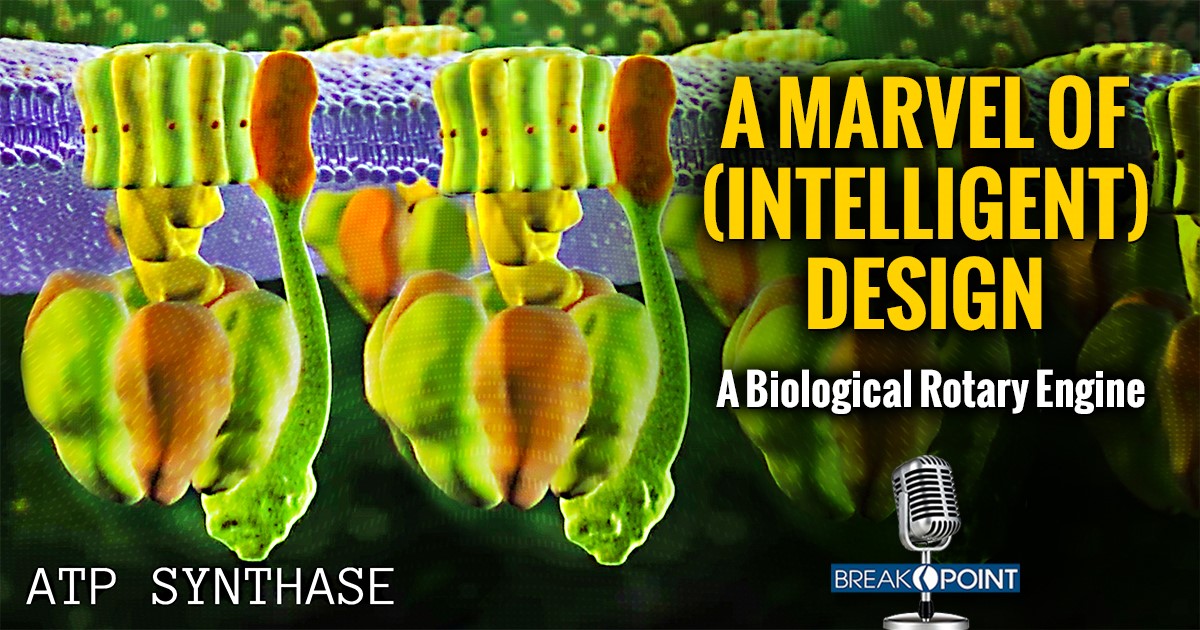


Could you even imagine a sports car with such a powerful, finely-tuned, rotary engine, whose rotor, drive shaft, and subunits work together so smoothly, that the engine can hit 42,000 rpm and achieve 100% energy efficiency? Well, no… as amazing as cars are these days, the best redline at 10,000 rpm and achieve below 50 percent energy efficiency, meaning that less than half of the power produced actually propels the car. The rest is emitted as wasted heat.
But… if automobile engineers could mimic the efficiency and power of the rotary engine that exists in every cell in our bodies? Well, watch out.
Recently, an article was posted at the Discovery Insitute website summarizing three new studies of the enzyme ATP synthase. As they describe it, “ATP synthase is a high-tech, micromolecular power generator” that works like a rotary engine. Its “barrel-shaped rotator spins around transmitting mechanical energy into the drive shaft of the machine to create adenosine triphosphate,” or ATP.
This is a good thing, since ATP is an “energy molecule that provides fuel that every one of your cells needs to function.”
And here’s where this gets really amazing. According to one of the recent studies, the ATP synthase rotary engine achieves nearly 100% energy efficiency. Meaning there is hardly any energy loss, even when working anywhere from 6,000 to 42,000 rpm—something human engineers can only dream about.
From their research, the authors of one of the studies claims “that nano-scale rotary engines” like ATP synthase “have much in common with basic design principles of man-made machines from the function of individual ‘machine elements’ to the requirement of the right ‘fuel’ and ‘oil’ for different types of motors.”
Now, there’s still a lot we don’t know about ATP synthase, but, the researchers confidently tell us, “What is evident is that several billion years of evolution have resulted in a biological motor that is unsurpassed in efficiency, fine-tuning to their environment, and sustainability.”
Really? So, a nano-tiny, vastly complex, and nearly perfectly energy-efficient machine can come about purely by chance and natural selection? This is the claim that Darwinists have to make, but as proponents of Intelligent Design have argued for the past 20-plus years, reason, logic, and mathematics stand in their way.
ATP synthase is a poster-child for what scientist Michael Behe calls “irreducible complexity,” a concept widely derided by neo-Darwinians because it’s so hard to refute. These tiny machines not only include many complex parts, they require a precise configuration of these parts in order to function properly. They could not have evolved from simpler mechanisms, because all the parts have to be present in order for them to work at all.
Similarly, Stephen Meyer describes in his book “Signature in the Cell,” how our DNA is made of “digitally encoded information.” All specified information like this, he writes, “always arises from an intelligent source, from a mind and not a strictly material process.” He places the chance of information randomly coming together to form the building blocks of life at 1 in 10 to the 41 thousandth power.
In his other landmark work “Darwin’s Doubt,” Meyer shows how the sudden appearance of numerous species of animals without common predecessors, something called the “Cambrian explosion,” proves to be an insurmountable obstacle to neo-Darwinian evolution. In fact, in a recent article entitled “Giving up Darwin,” renowned computer scientist and thinker David Gelernter credited Meyer’s work for leading him to reject Darwinism all together.
The more we discover about the world, the more complex and irreducibly complex we discover the world to be, from the vastness of the universe, to the preciseness of language, to those nano-sized rotary engines fueling our bodies. Eventually, the so-called “appearance of design” requires us to conclude the universe is the product of design, and therefore a Designer.
Have a Follow-up Question?
Up
Next

Related Content

© Copyright 2020, All Rights Reserved.













